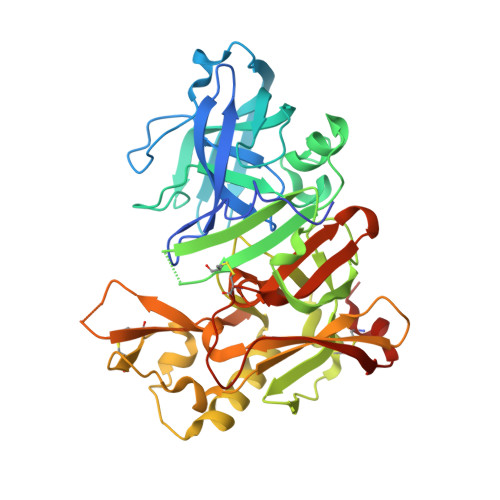beta-Secretase (BACE1) inhibitors with high in vivo efficacy suitable for clinical evaluation in Alzheimer's disease.
Hilpert, H., Guba, W., Woltering, T.J., Wostl, W., Pinard, E., Mauser, H., Mayweg, A.V., Rogers-Evans, M., Humm, R., Krummenacher, D., Muser, T., Schnider, C., Jacobsen, H., Ozmen, L., Bergadano, A., Banner, D.W., Hochstrasser, R., Kuglstatter, A., David-Pierson, P., Fischer, H., Polara, A., Narquizian, R.(2013) J Med Chem 56: 3980-3995
- PubMed: 23590342
- DOI: https://doi.org/10.1021/jm400225m
- Primary Citation of Related Structures:
3ZLQ, 3ZMG, 4J0P, 4J0T, 4J0V, 4J0Y, 4J0Z, 4J17, 4J1C, 4J1E, 4J1F, 4J1H, 4J1I, 4J1K - PubMed Abstract:
An extensive fluorine scan of 1,3-oxazines revealed the power of fluorine(s) to lower the pKa and thereby dramatically change the pharmacological profile of this class of BACE1 inhibitors. The CF3 substituted oxazine 89, a potent and highly brain penetrant BACE1 inhibitor, was able to reduce significantly CSF Aβ40 and 42 in rats at oral doses as low as 1 mg/kg. The effect was long lasting, showing a significant reduction of Aβ40 and 42 even after 24 h. In contrast to 89, compound 1b lacking the CF3 group was virtually inactive in vivo.
- Discovery Chemistry, Pharma Research & Early Development, Grenzacherstrasse 124, Basel CH-4070, Switzerland. hans.hilpert@roche.com
Organizational Affiliation:



















